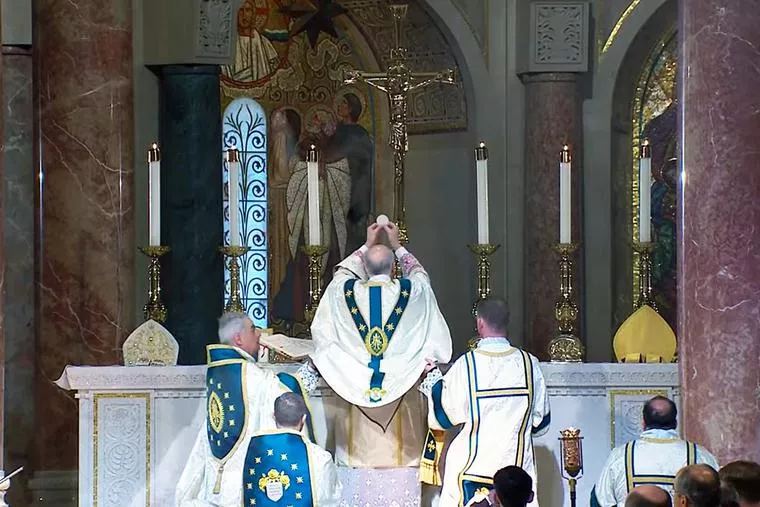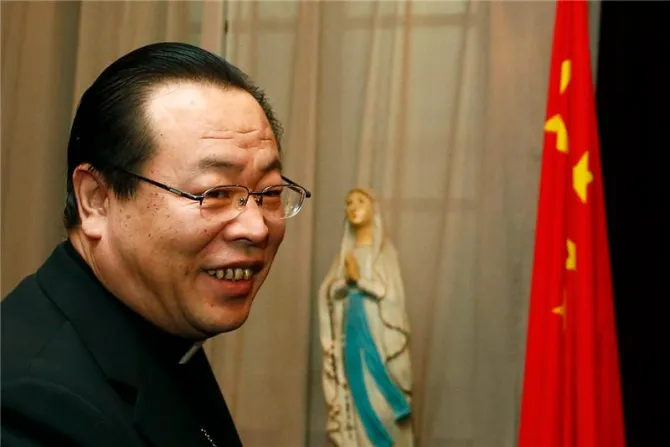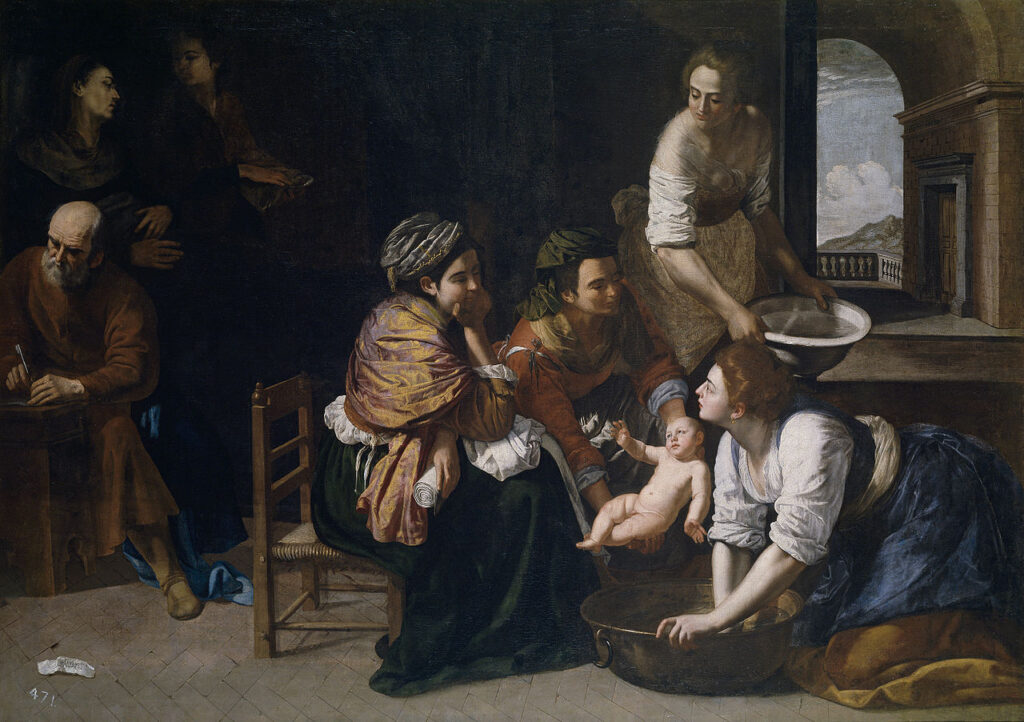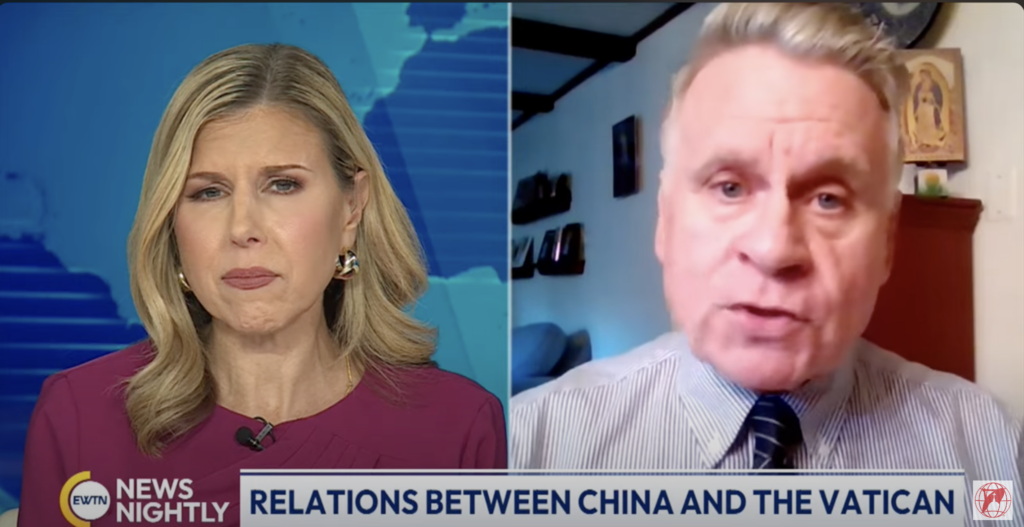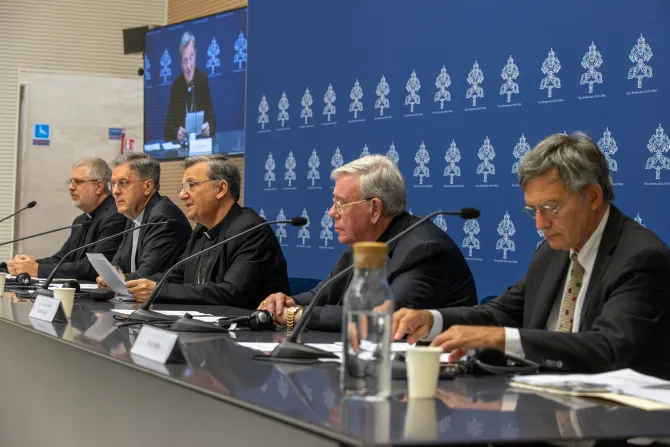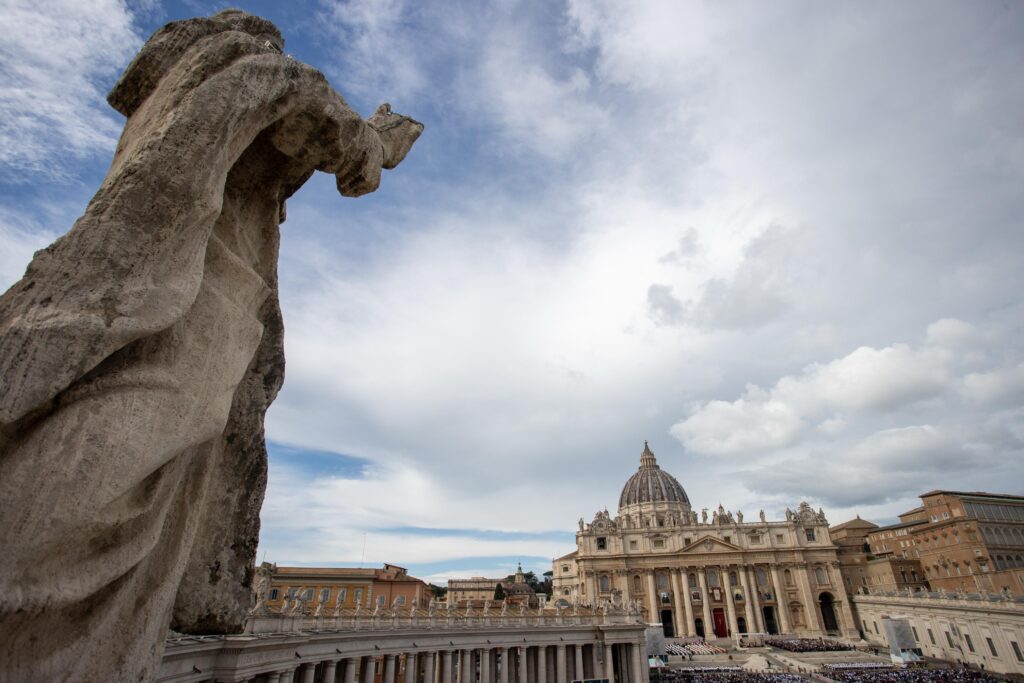Objective Beauty of the Traditional Latin Mass Evangelizes
By Archbishop Salvatore Cordileone
When the Cathedral of Notre Dame de Paris erupted in flames on April 15, 2019, the whole world came together to mourn the loss of great, ancient, sacred beauty that moved hearts and souls even beyond the Catholics who worship there and Catholics all around the world.
I was impressed by that phenomenon then, and I am somewhat impressed by a similar phenomenon happening now in reaction to rumors that Rome plans to place further restrictions on the celebration of the Catholic Mass according to the 1962 Roman Missal (popularly referred to as the “Latin Mass” or the “traditional Latin Mass”).
On July 3, more than 40 prominent British individuals signed a letter to Pope Francis, asking him to preserve access to the Latin Mass. These signers include Catholics and non-Catholics, believers and nonbelievers alike.
Like the signers of the 1971 petition that preserved the Latin Mass in England, they highlight, in addition to spiritual concerns, a concern for the cultural heritage of the world should the Latin Mass become harder to experience. In their own petition the signers quote from the language of that 1971 ‘Agatha Christie’ petition in affirming that “‘the rite in question, in its magnificent Latin text, has also inspired priceless achievements … by poets, philosophers, musicians, architects, painters and sculptors in all countries and epochs. Thus, it belongs to universal culture.’”
To this concern the current signatories add their own voice: “The traditional liturgy is a ‘cathedral’ of text and gesture, developing as those venerable buildings did over many centuries. Not everyone appreciates its value and that is fine; but to destroy it seems an unnecessary and insensitive act in a world where history can all too easily slip away forgotten.”
They underscore, “This appeal, like its predecessor, is ‘entirely ecumenical and non-political’. … We implore the Holy See to reconsider any further restriction of access to this magnificent spiritual and cultural heritage.”
That one of the signers is the noted human-rights activist Bianca Jagger underscores the apolitical and non-ideological nature of the request. Surely “rigidity” cannot explain such an extraordinary and diverse outpouring of love for this liturgical form.
I am concerned that a skewed impression of lovers of the Latin Mass has taken hold due to a few extremists on the internet. As this petition, and previous petitions, demonstrate, the Latin Mass has a curiously inclusive appeal.
Most who attend the Latin Mass also attend the Novus Ordo (known colloquially as the Mass of Vatican II). They know that to be Catholic means we must remain inside the barque of Peter, however stormy the seas. They plead not against the new Mass but for the form they love, that feeds and inspires them — indeed, to the point that they constitute a visible proportion of those who go on to become creators of new art and beauty in which the world shares and celebrates. This is why the Latin Mass has attracted the support of nonbelievers who understand its crucial role in the creation of Western civilization.
The signers of the most recent petition include many great classical musicians — singers, pianists, cellists, conductors and including, of course, Sir James MacMillan, who spearheaded this petition effort. MacMillan is the most celebrated and most performed Catholic classical music composer of our times. His Stabat Mater was commissioned by the Vatican and performed in the Sistine Chapel.
Other important artists include the celebrated novelist, screenwriter and film director Julian Fellowes, who has won the Academy Award, Emmy Award and the Tony Award. Fellowes is perhaps best known for his role as the creator of the long-running television series Downton Abbey. Another signatory, Andrew Lloyd-Webber, is perhaps the most successful creator of musicals of our age (including Cats, Evita, Joseph and the Amazing Technicolor Dream Coat and the modern Passion play Jesus Christ Superstar).
The signers of the 1971 “Agatha Christie” petition also included celebrated artists and literary figures, such as poets Robert Lowell, Robert Graves, David Jones and England’s poet laureate Cecil Day-Lewis; novelists such as Graham Greene, Nancy Mitford, Djuna Barnes and Julian Green, as well as the most celebrated Argentinian short-story writer Jorge Luis Borges, whose literary work gave birth to the “magic realism” movement of the late-20th century among Spanish writers in the Americas. And beyond this, the signatories included even Anglican Bishops Robert Cecil Mortimer of Exeter and John Moorman of Ripon.
There was a similar petition in 1966, organized by Christine Campo, translator of Marcel Proust (another example of a lapsed Catholic who understood the value of the Latin Mass for preserving civilization even in a secular sense), and addressed to Pope Paul VI, asking that the Latin Mass be maintained at least in monastic communities. It gathered signatures from 37 writers and artists, including two Nobel Prize winners. Among the signers were W.H. Auden, Evelyn Waugh, Jacques Maritain, French Nobel Prize-winning novelist Francois Mauriac, composer Benjamin Britten and Gertrud von Le Fort, the author of the Catholic classic Dialogue of the Carmelites, which later formed the basis of an opera by Francis Poulenc.
The Second Vatican Council taught us to read the signs of the times. One sign staring at us right now in large block letters is: Beauty evangelizes.
We live in an age when we need to leverage the power of beauty to touch minds, hearts and souls, for beauty has the quality of an inescapably real experience, one that is not subject to argument. The current cultural maxim, “You have your truth and I have my truth” leads to the refusal to recognize even obvious physical and biological reality, whereas beauty circumvents the cognitive process and hits directly to the soul. Sacred beauty lifts us out of the world of time and gives us a glimpse of that which transcends time, of what ultimately lasts, of what our goal and our final home is: the reality of God.
Take the example of filmmaker Martin Scorsese. Even with all of the criticism for his controversial depictions of religious themes, and even of our Lord himself, Scorsese is one modern artist whose imagination was formed by the contrast between what the Latin Mass conveyed and the tough- guy culture of New York streets. As a profile in The New York Times in 2016 put it:”
“Inside the old cathedral, it became clear how literally Scorsese has never forgotten — not the splendor of the church, nor the presence of suffering and death, sin and redemption, nearby. The pastor pointed out the details of a renovation: the saints retouched in their original colors, the marble and brass altar fixtures restored to the way they were before a 1970 modernizing effort. Scorsese, who left the neighborhood in 1965, didn’t need a guide. He knew every inch of the place. ‘Picture an 8-year-old boy standing right here in a white cassock, reciting a prayer in Latin,’ he mused aloud. ‘That’s me.’ … I asked him to draw a connection between [his 2016 film] ‘Silence’ and what he was seeing in the old cathedral. He tapped his forehead with two fingers. ‘The connection is that it has never been interrupted. It’s continuous. I never left. In my mind, I am here every day.’
In an age of anxiety and unreason, beauty is thus a largely untapped resource for reaching people, especially young people, with the Gospel message of hope. There is much work to do, but honoring and encouraging the special calling of artists is a key part of this labor.
In a de-Christianized age that is becoming increasingly inhospitable to any traditional sense of religion, the Church needs to operate on all cylinders. The traditional Latin Mass and the beauty it inspires is one of those cylinders. That even nonbelievers can feel an attraction to it in itself proves this point.
Why suppress what is one, among others, successful means for connecting with souls far away from Christ and bringing them into the loving and saving encounter with him within the communion of his Bride, the Church?
I trust and pray that this cri de coeur from the artists and other prominent British figures will be heard and seen it for what it is: that, rather than dividing the world in the name of ideological purity, it is an opportunity to bring the world together for beauty — a path that eventually and inevitably leads to the Beauty ever ancient, Beauty ever new.
Photo credit:
Archbishop Salvatore Cordileone of San Francisco celebrates the ‘Mass of the Americas’ using the extraordinary form of the Mass at the Basilica of the National Shrine of the Immaculate Conception in Washington, D.C., Nov. 16, 2019. (photo: EWTN/YouTube Screen Capture)

